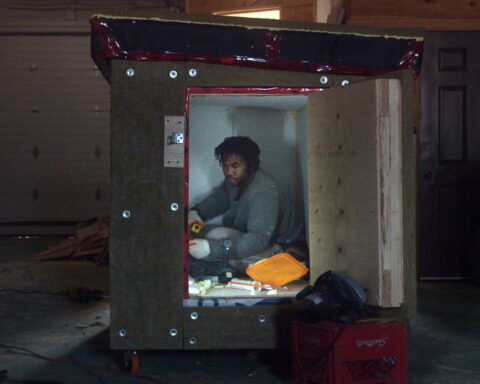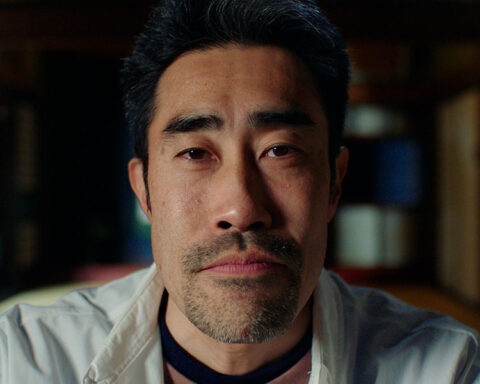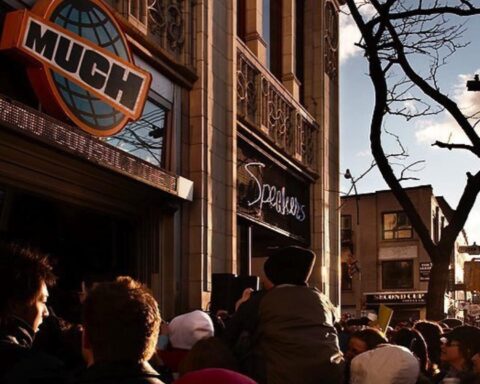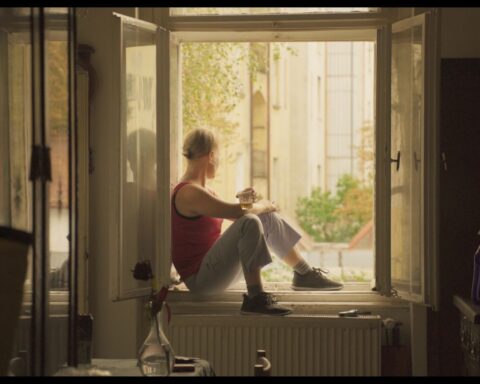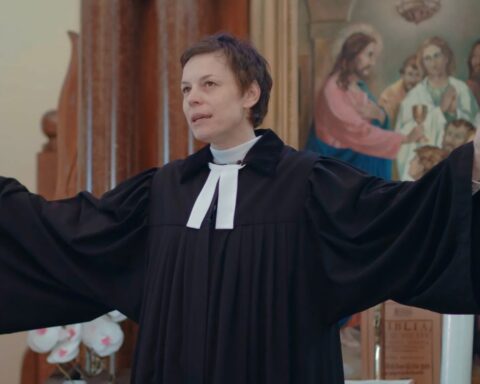The Look of Silence
(Denmark/Indonesia/Norway/Finland/United Kingdom, 102 min.)
Dir. Joshua Oppenheimer
Programme: TIFF Docs (Canadian Premiere)
Joshua Oppenheimer revisits the civil war and mass murders of 1960s Indonesia in his companion piece to The Act of Killing, The Look of Silence. Killing is a tough act to follow, since Oppenheimer’s ingenious use of re-enactment and drama reveals layers of truth in a meta-fictional meditation on guilt and accountability. Silence takes a much more conventional approach to the topic, so it might suffer in comparison for viewers hoping to explore another formal landmark in documentary film. The film still stings, though, since Oppenheimer gives an impeccably pointed interrogation of the murders through the eyes of family members left to mourn the victims. The killers had their story, and now the victims have theirs.
The Look of Silence follows Adi, whose brother was brutally murdered during the killings, as he interviews members of his community to discuss this chapter of their collective past that few townspeople acknowledge. The Look of Silence makes less of an effort to confront the murderers themselves (although it does so directly and chillingly) and it instead makes more of an objective to confront the parties who share guilt through complicity or, rather, through their wilful blindness to the truth. Family members of the murderers speak openly and proudly of their parents’ actions while other parties whom Oppenheimer and Adi encounter are visibly shaken by the brutal gaps between the stories their parents told them and the truth the filmmakers reveal. Most powerful, though, are the eerie pauses in the conversations in which the interviewees palpably hesitate to choose which version of the truth they want to believe. While The Look of Silence never quite matches the scope or power of The Act of Killing, it reveals and ultimately tries to reconcile the different kinds of truth that persist in cultural mythology.
Oppenheimer, though, finds a salient metaphor in Adi’s profession, optometry, for the willful blindness of the interviewees. Numerous sequences see Adi correct the eyesight of the guilty parties so that they have clear vision, rather than the blurry alternative that leaves things open for interpretation. The act also offers a powerful gesture on Adi’s part, for his effort to help the killers likens itself to an act of collective healing and forgiveness. Adi, despite the brutal pain these men inflicted upon his brother, seeks clarity and forgiveness instead of revenge.
The simple interview structure of the film serves the victims and subjects well, since The Look of Silence respects the facts as they are, but avoids the awkward, if effective, conceit of The Act of Killing that sees an outsider prompt citizens to take their national trauma and turn it into a play. Some re-enactments appear, mainly a crudely shot video in which the two murderers of Adi’s brother relive the scene of his death with glee. (One killer actually brings a knife for authenticity.) Silence seems to anticipate Killing, rather than follow it, so Oppenheimer’s revisit to the scene of the crime is curious since the films practically work in reverse. Perhaps this formal gap between Killing and Silence is essential, for the fact is that few, if any, of the interview subjects acknowledge that the period actually was a time of national trauma and not pride.
One particularly riveting scene, however, sees The Look of Silence break the wall between subject and filmmaker when the family members of one of the murders directly challenge Oppenheimer’s interrogation. Their discomfort at airing their history catches them in direct lies as Oppenheimer and Adi present evidence that the family bluntly denies. (Even though video evidence indicates otherwise.) This heated sequence reveals the difficulty in shifting the consciousness of people who have long accepted a lie, and it shows just how deeply rooted the romanticism of the communist extermination is in Indonesian modern mythology.
The film also adds a complementary narrative about the danger of forgetting and the need to revive the ghosts of the past before the proper history is forgotten. Adi’s elderly parents—his mother is in her eighties and his father is well over one-hundred-years-old—form a crucial thread of the film. His mother is still mostly sharp but his father bears the inevitable haziness that comes with being so old, and while the parents offer some necessary comic relief to the film, they also convey the sorrow that comes when memories fade. Near the end of the film, when Adi has uncovered much of the truth, including some very hard revelations regarding family members, his mother is overcome with grief but his father had no recollection of the son whose death Adi has just worked to reconcile. The simple observation of this one family’s fractured narrative alone merits the need for a second film to tell more of the story, and to tell the stories of those rendered silent in this brutal corner of history. A trilogy would be most welcome.
The Look of Silence screens:
Tuesday, Sept. 9 at 3:15 pm at TIFF Bell Lightbox 1
Wednesday, Sept. 10 at 6:00 pm at Scotiabank 1
Sunday, Sept. 14 at 12:30 at the Bloor Hot Docs Cinema




